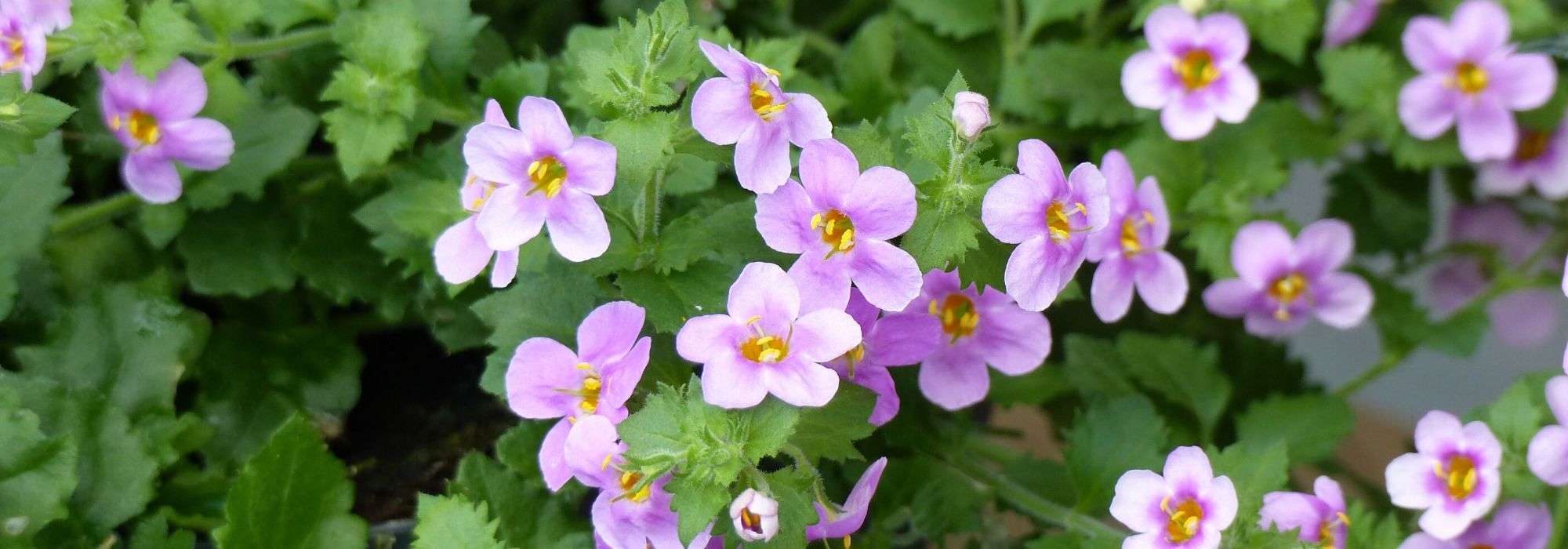
Bacopa: planting, growing, care
Contents
Bacopa in a nutshell
- Highly floriferous and fast-growing, Bacopa offers 6 months of flowers from June to October
- This plant forms trailing cascades of bright pink, mauve, or white flowers
- This non-hardy perennial is grown as an annual in the ground or in pots
- It is one of the easiest plants to succeed in both sun and light shade, provided you give it regular watering!
- It quickly fills hanging baskets and balcony boxes
A word from our expert
Bacopa, also known as Sutera cordata, is a lovely trailing annual plant that quickly fills hanging baskets and balcony boxes on both balconies and terraces. It forms cascades of delicate flowers, with colours varying by variety, ranging from blue-purple in Bacopa ‘Gulliver Blue Sensation’ to pure white in Bacopa ‘Dynamic White’. Beware of confusion! It should not be confused with Bacopa monnieri, a species long used in Ayurvedic medicine to enhance concentration and memory (it may be contraindicated or even pose health risks in cases of hypertension and thyroid issues), nor with Bacopa caroliniana, which is an aquarium plant.
This summer-flowering plant is a tender perennial grown as an annual in our climates.
Low-maintenance and easy to grow, it thrives in full sun or light shade in the warmest regions. It enjoys well-drained garden soil that remains cool and requires only regular but moderate watering to encourage and support its long flowering period.
Discover our collection of Bacopas in plug plants and let yourself be charmed by this generous and fresh non-hardy perennial.
Description and botany
“`html
Botanical data
- Latin name Sutera cordata, Bacopa cordata
- Family Scrophulariaceae
- Common name Bacopa
- Flowering June to October
- Height 0.15 to 0.30 m
- Exposure Sun, partial shade
- Soil type rich and light
- Hardiness frost-sensitive
Bacopa is a frost-sensitive perennial or shrub from the Scrophulariaceae family. It grows in clear forests and savannas of South Africa. The genus includes about fifty species, the most widespread being Sutera cordata, which is tender and therefore grown as an annual in our climates. It comes in numerous varieties with white, pink, or mauve flowers, similar to the cultivars of the ‘Gulliver’® series. It should not be confused with Bacopa monnieri, a species native to the tropical and marshy areas of East Asia and India, long used in Ayurvedic medicine, nor with Bacopa caroliniana, an aquatic species offered as an aquarium plant.
Bacopa quickly forms a small, low, spreading bush with a semi-trailing habit, making this plant a reliable choice for hanging baskets and window boxes.
It develops woody stems that spread and quickly form a compact, highly branched clump, ranging from 10 cm to 45 cm in height and up to 50 cm in width.
These trailing stems, when planted in hanging arrangements, are purplish and villous, bearing dense foliage. The small, medium to bright green, heart-shaped leaves, measuring about 1 to 3 cm, are opposite, short-petiolate, and have crenate edges. ‘Gold’n Pearl’ is a cultivar distinguished by its variegated yellow-green foliage.
From May to October, without interruption, Bacopa transforms into a flowering cushion. A multitude of flowers continuously invade the stems along their length, emerging from the axils of the leaves. The small tubular flowers, measuring 1.5 to 2 cm in diameter, consist of five rounded lobes, centred around four golden-yellow stamens pressed against the corolla. The throat is sometimes marked with a purple eye.
Bacopa is remarkable for its long and generous flowering and its beautiful range of colours, enhanced by the emergence of new varieties ranging from lavender blue to bluish-purple in Gulliver ‘Blue Sensation’ to pale pink in Gulliver ‘Pink Heart Improved’ or salmon, as well as pure white in Gulliver ‘Dynamic White’. Some varieties offer bicoloured petals, while others, like Bacopa ‘Scopia Double Indigo’, stand out with double corollas resembling small roses.
This bright flowering gives way to small capsules of no ornamental interest.
Bacopa is a frost-sensitive perennial that fears frost. It is grown as an annual. It is easy to cultivate in full sun or possibly in partial shade in very hot regions, in any good humus-bearing garden soil that is fresh and well-drained. It requires only regular but moderate watering.
It makes a significant impact in hanging baskets and window boxes but can also be integrated as a temporary groundcover in borders or in rockeries in open ground.
The bacopa monnieri is said to help improve memory and cognitive abilities, limit nervous disorders, and also relieve digestive issues.
“`
Main species and varieties
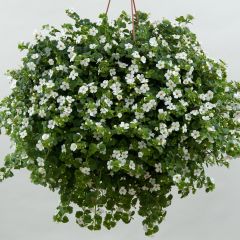
Bacopa Gulliver Dynamic White
- Flowering time July to November
- Height at maturity 15 cm
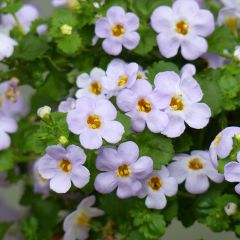
Sutera Scopia Gulliver Blue Sensation
- Flowering time July to November
- Height at maturity 15 cm
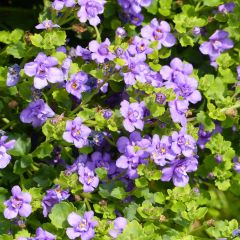
Sutera Scopia Double Indigo
- Flowering time July to November
- Height at maturity 25 cm
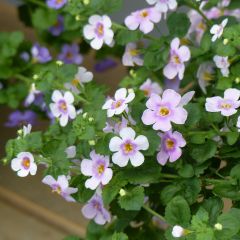
Sutera Scopia Gulliver Pink Heart Improved
- Flowering time July to November
- Height at maturity 15 cm
Discover other Bacopa
View all →Available in 2 sizes
Available in 0 sizes
Available in 1 sizes
Available in 2 sizes
Available in 2 sizes
Available in 1 sizes
Available in 1 sizes
Available in 1 sizes
Planting
Where to plant bacopa?
From its South African origins, this perennial has retained a great sensitivity to cold! This plant fears severe frost and will be grown as an annual in the ground or in pots in our climates.
The Bacopa requires a very sunny but not scorching exposure. In the south of France, it will tolerate partial shade as it cannot withstand heat and dry soils. It also fears stagnant moisture. Plant it sheltered from the wind in cool, light, rich, and well-drained soil.
This easy-going annual thrives in hanging baskets and window boxes to brighten up a windowsill or in pots at the foot of a wall or on a terrace, wherever its floriferous stems can cascade. With its compact silhouette, it allows for the creation of colourful clumps in perennial or annual beds or to punctuate a flowerbed in all naturalistic gardens or romantic gardens. It is also a good plant for a conservatory or patio.
When to plant bacopa?
Plant our young plug plants in the ground or in pots, when the frosts are definitely over, in April-May depending on the regions. In the meantime, you can pre-cultivate them under cover to hasten their development, in a conservatory or greenhouse at a temperature above 14°C before placing them outside.
How to plant bacopa?
How to plant it in pots or hanging baskets?
Plant in a rich and well-draining mix of compost suitable for geraniums or flowering plants. In a pot with a diameter of 20 cm, place a single Bacopa plant. In a beautiful planter or hanging basket, you can plant it in combination with two or three other annual flowers. All the tips you need to plant window boxes and hanging baskets with annuals in plug plants are on our blog!
- Soak the plugs in a basin of water before planting
- Spread a layer of gravel or clay balls at the bottom of the container
- Plant the plug without burying the collar
- Fill in and firm down
- Water without over-saturating, then as soon as the soil dries on the surface
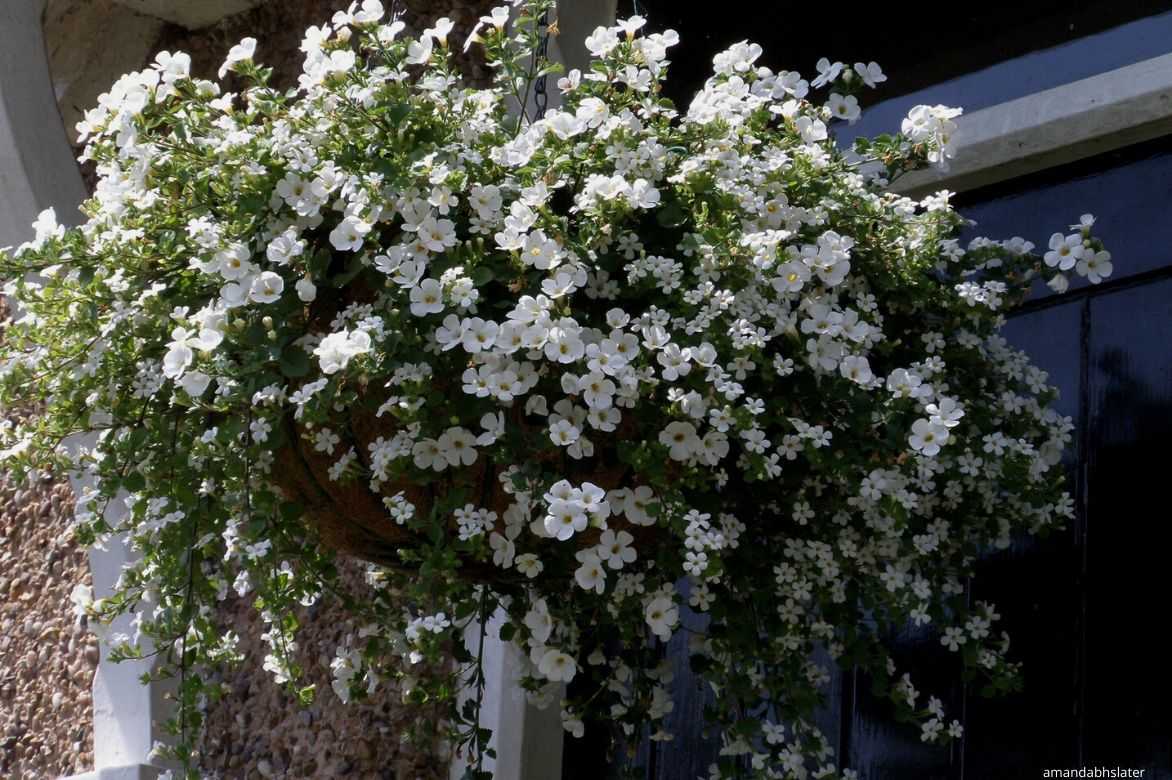
Beautiful hanging basket with a white Bacopa
In the ground
Plant approximately 4 Bacopa plants per m², spacing them 30 cm apart in all directions, and plant them in a staggered formation.
- Soak the plugs in a basin of water to thoroughly moisten them before planting
- Dig a hole 2 to 3 times larger than the size of the plug
- Add gravel or clay balls to the bottom of the hole
- Mix the extracted soil with some compost
- Place the plug in the centre of the hole without burying the collar
- Fill in
- Firm down
- Water generously
Take advantage of our tips to successfully plant annual flowers in plug plants
Maintenance and Care
Bacopa requires little care as long as the soil remains perfectly drained and sufficiently cool in summer. In the ground as well as in pots, it should be watered regularly, especially during hot summer days: water so that the soil never dries out completely but without excess to prevent the roots from rotting.
To support the flowering of potted specimens, add liquid fertiliser for flowering plants to the watering water every week from June to September.
To encourage further ramification of your bacopas, pinch the tips of the stems.
Regularly remove faded flowers.
At the end of the season, pull up and dispose of the Bacopa plants. You may optionally bring your pots indoors before the first frosts and store them in a cold, frost-free room to bring them out the following spring. During this winter period, limit water supplies.
Diseases and pests
Absolutely avoid excess water and always allow the soil to dry out between waterings as this encourages the appearance of fungi (grey mould) that can rot the roots and radically destroy a plant in just a few weeks.
Bacopa can also suffer from attacks by aphids and whiteflies during the summer: install trap plants like nasturtiums nearby and cut the infested stems. Spray with soapy water.
How to take cuttings of Bacopa?
Cuttings of Bacopa are easy to take in spring.
- Take 10 cm long stem tips without flowers
- Remove the lower leaves
- Plant the cuttings in pots filled with potting soil and sand
- Place in light and warmth, keeping moist but not waterlogged until rooting
- Repot into larger pots when they are sufficiently developed
Our pairing ideas with Bacopa
Bacopa allows for numerous combinations. With its bushy silhouette and soft hues, it easily finds its place in natural or naturalistic gardens or romantic gardens.
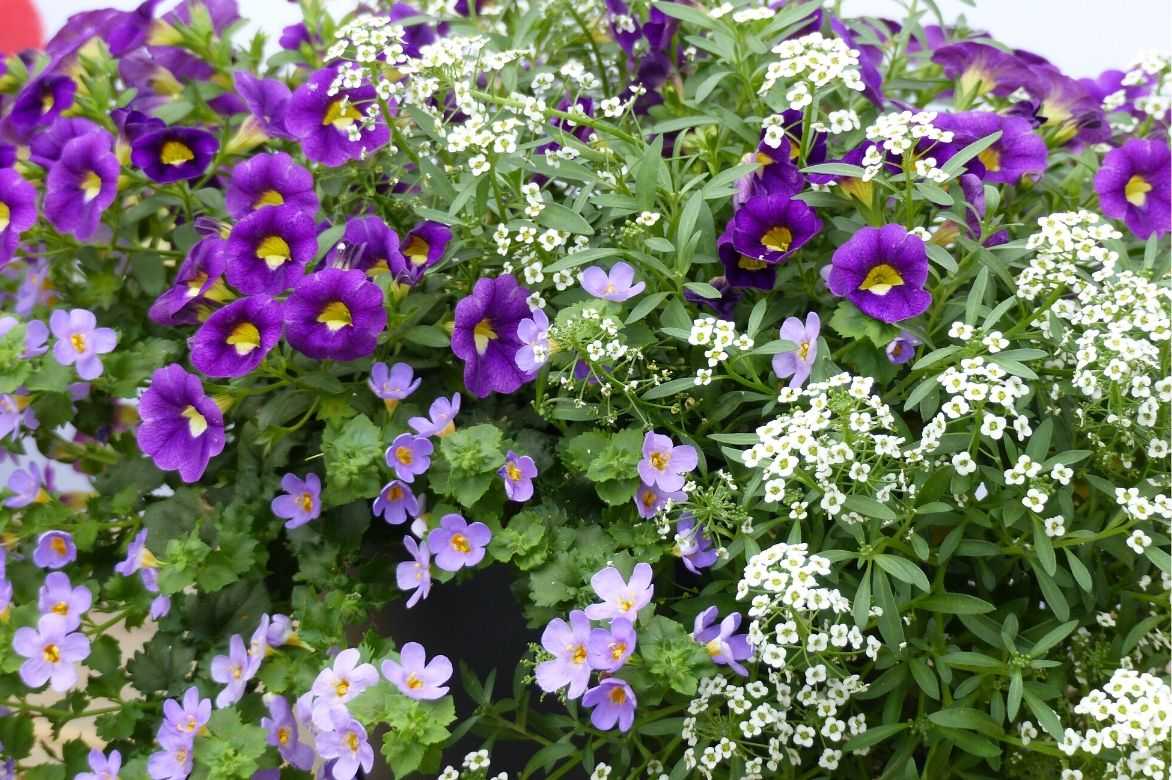
An example of a combination: Calibrachoa, Bacopa and Lobularia
It pairs easily with all annual balcony plants such as diascias, pelargoniums, Surfinia petunias, lobelias, Scaevola aemula, and Impatiens. At the front of a flower bed or as a border, use it in combination with other low-growing plants like dwarf roses, Nemesia, dianthus, and aubrietas. It will conceal the base of a rose or clematis throughout the beautiful season and will enhance the base of taller annual flowers such as Cleomes, cosmos, centauries, verbenas, and nigellas.
Within a summer border, it will create colourful touches among dwarf dahlias, fuchsias, asters, hardy geraniums, or phlox, among which it will intertwine beautifully.
Useful resources
- The most beautiful annual plants are in our nursery!
- Follow all our tips for properly planting annuals
- Discover our best ideas to flower your balconies and terraces
- Check out our 7 pairing ideas to create beautiful summer planters
- Subscribe!
- Contents
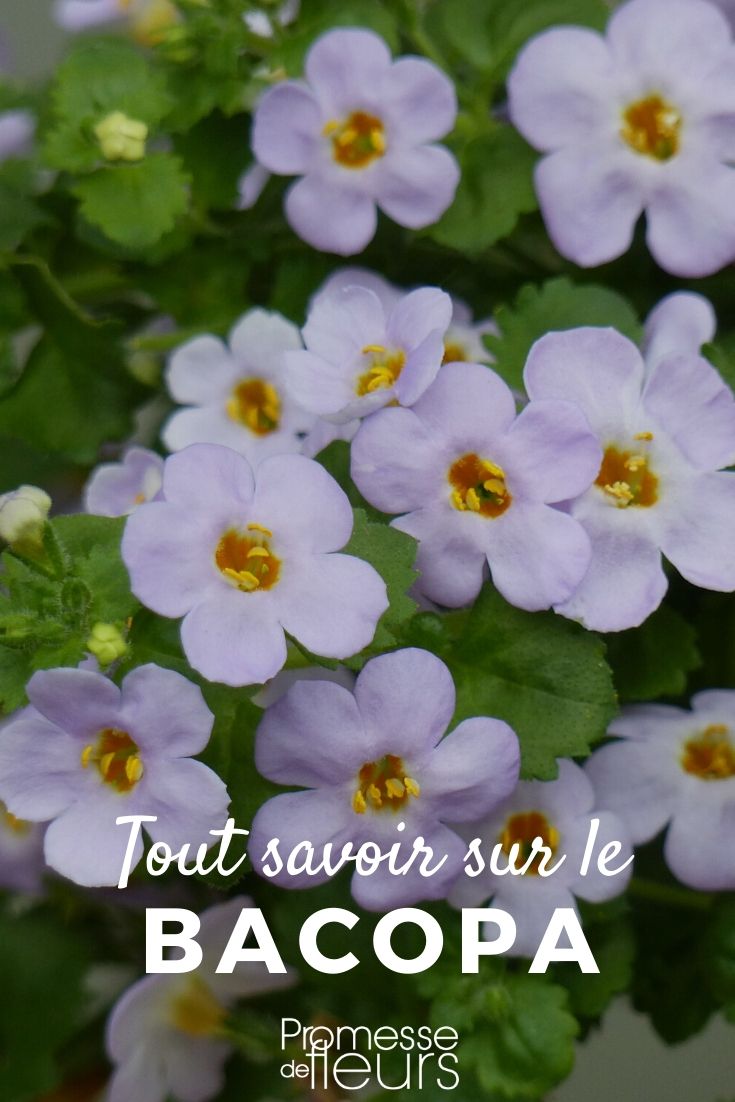































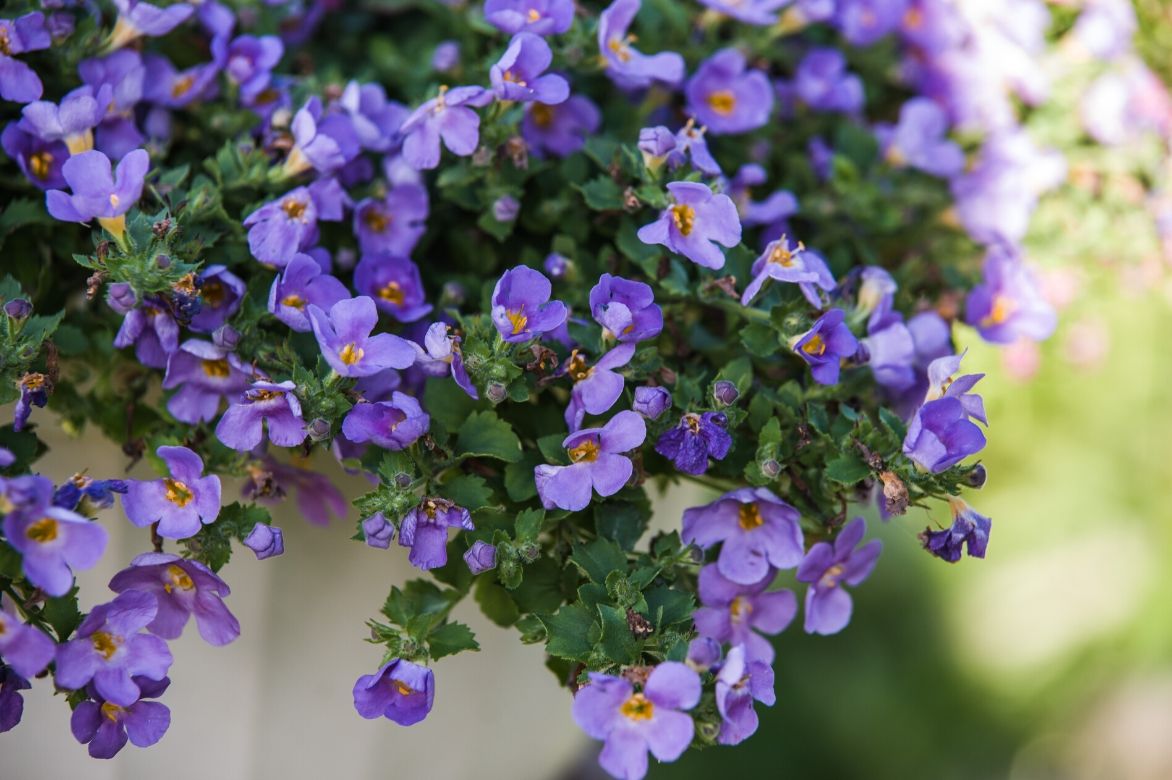

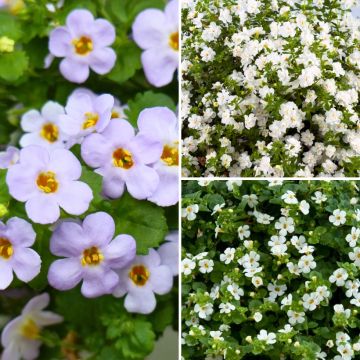
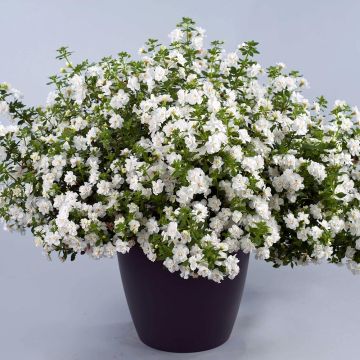

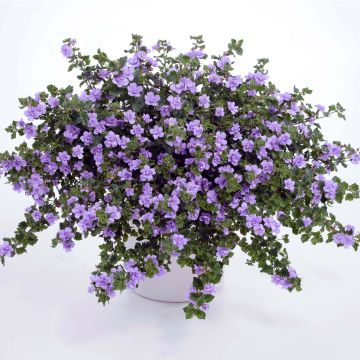



Comments